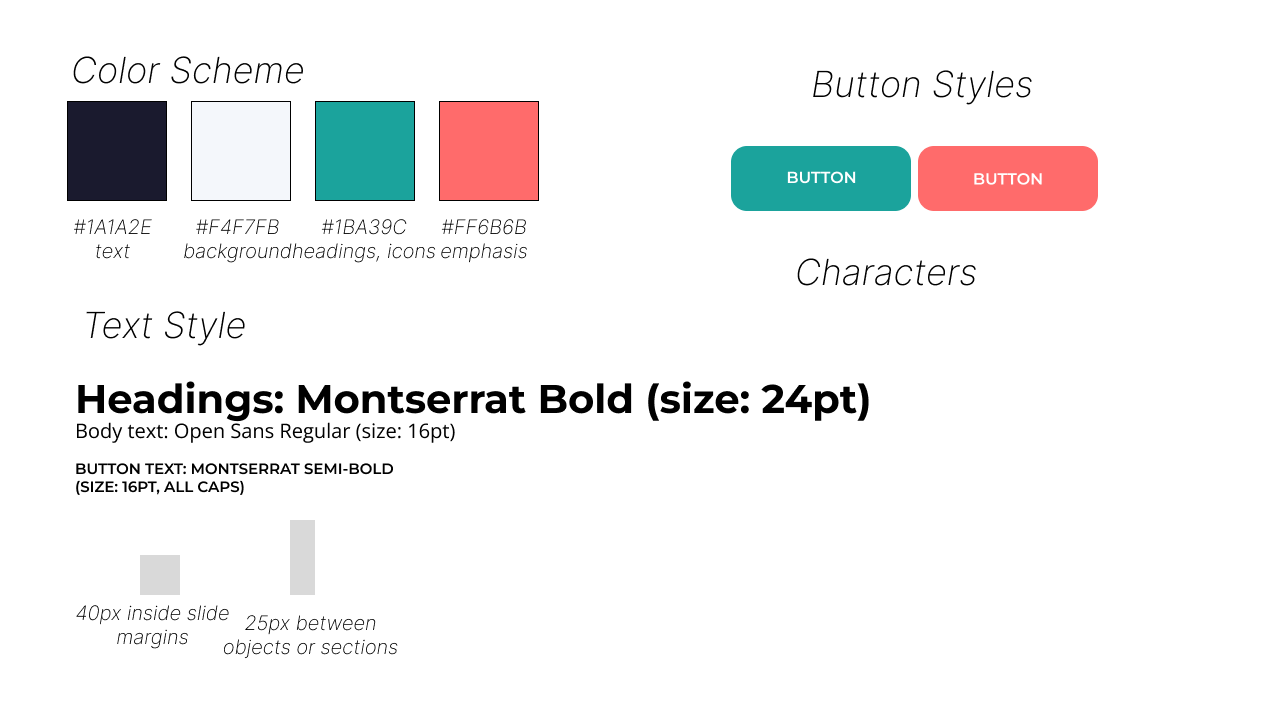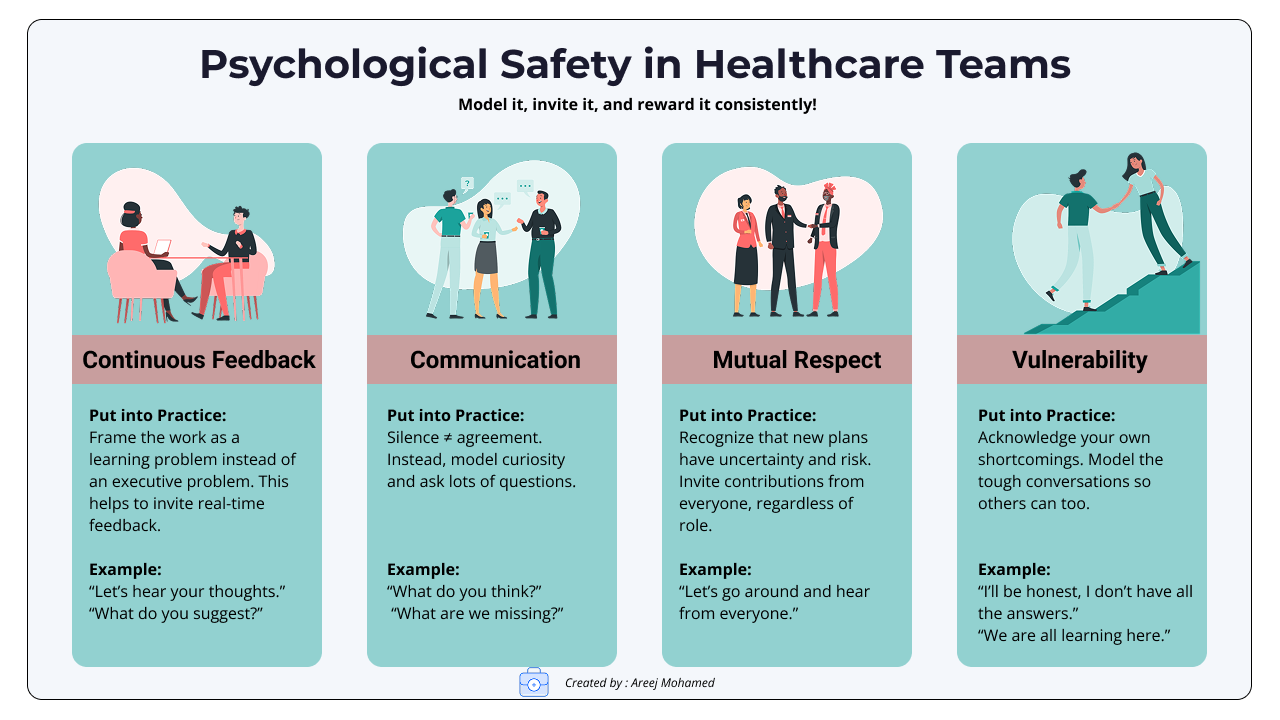Stronger Together: Building Psychological Safety in Healthcare Teams
-
Overview: This micromodule follows Amy Edmondson’s original concept of Psychological Safety and offers learners opportunities to recognize behaviors that foster psychological safety and apply strategies to strengthen communication and collaboration.
Audience: Leaders of healthcare teams.
Responsibilities: Instructional designer, eLearning development, Working with SME’s, Action mapping, Instructional Design, Mockups, Animation Editor, Visual Designer.
Tools Used: Animaker, MindMeister, Figma, Articulate Storyline 360
-
Managing conversations as a team lead can lead to uncertain situations. Leaders looking to address the needs of their team members need a guideline. This micromodule offers learners ways to recognize behaviors that foster psychological safety and apply strategies to strengthen communication and collaboration.
-
I applied core principles from ADDIE and Gagne's Nine Events of Instruction. Learners are introduced to the topic with a hook that grabs their attention, then the learning topics are introduced. The learning is from one snapshot of time and gives multiple opportunities through repeated practice through modeling and simulations. This in turn enhances retention and transfer of behavioral practices.
-
I gathered insights from Amy Edmonson’s work and Kiley Mulholland’s article, “Integrating Psychological Safety into Laboratory Operations.” Edmonson introduced the concept of psychological safety in the 1990s, which has since helped many industries improve team collaboration. Mulholland applied these principles to strengthen her lab team. For this project, the goal was to improve how healthcare teams communicate, making sure everyone feels safe to share ideas and concerns. The training focuses on helping learners change what they do, not just what they know. I documented this goal and the high-priority actions in MindMeister and referenced them throughout the project.
-
The story is based on my experience as a team lead and ideas from the expert’s article. It follows Samantha B., a healthcare manager who received a poor review, especially in team meetings. She has a low score for psychological safety. Erin Sullivan, an expert on psychological safety, helps learners support Samantha in her next team meeting. The healthcare team includes Doctor Cooper, Nurse Cathy, Brittney the X-Ray Technician, and Samantha. Each person shows one key idea: Communication, Feedback, Vulnerability, or Respect. Learners complete two activities: a drag-and-drop and a multiple-choice question, both with real-life situations and clear feedback. By the end, learners help Samantha improve her review score and make the team work better together.
-
I used Figma to design a clean and easy-to-use layout for this healthcare learning module. The color scheme includes a dark background with white text for readability, teal for calm, and light fuchsia to highlight important points and add warmth. I planned each screen, intro, goals, scenarios, reflection, and conclusion with clear spacing, buttons, and text to make the course easy to follow. I also created simple character scenes using AI images and stock images to show the healthcare team members and make conversations feel real. This mockup helped test the design and get feedback before building the full course.
-
To avoid overwhelming learners, I followed Mayer’s Multimedia Principle by limiting on-screen text during narration. I used Articulate Storyline 360’s AI voice generator to turn character dialogue into audio that matched the visuals. This helped learners stay focused without reading and listening to the same information. I built a custom drag-and-drop activity where users match actions to responses related to psychological safety. If a user makes a wrong match, they get feedback that helps them think again and try a better option. This gives learners a chance to learn by doing and not just watching. I also created multiple-choice scenarios that reflect common workplace situations. Each answer gives helpful feedback and shows the impact of the learner’s choice. This helps learners understand how their actions affect team communication and trust. Overall, the project gives healthcare managers a chance to practice building psychological safety in a realistic, low-pressure way.
-
This project challenged me to incorporate AI in making design choices . By integrating real-life scenarios, this module promoted empathy, reflection, and team cohesion. The project reinforced the importance of learner-centered storytelling in creating emotionally safe environments within high-stress healthcare settings.








